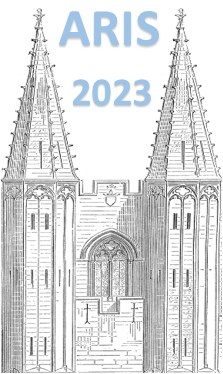Orateur
Description
In a simple picture, nuclei in the vicinity of double magic isotopes are of great interest from both experimental and theoretical points of view. Such nuclei have a spherical shape and the excitations-energy spectrum is dominated by single-particle excitation. This simple approach may need to be revised for nuclei that are significantly off the stability path on the neutron-rich side. The study of the evolution of single-particle states, interaction energies and $\beta$-decay properties (half-lives, $\beta$-decay strength, and $\beta$-delayed neutron emission probability) are important for understanding the structure of such exotic nuclei, as well as for its relevance in understanding the astrophysical r-process.
In this particular, understanding the nuclear structure near the doubly-magic $^{132}$Sn is important for validating theoretical models that predict properties of more exotic nuclei, which are not experimentally accessible. In the specificity, the single-particle energy of the neutron state i$_{13/2}$ is still not firmly established [1,2] and it was suggested that nuclear structure affects the neutron versus $\gamma$-ray competition in the decay of neutron-unbound states [3]. The $n$-$\gamma$ competition in the de-excitation of excited states of these nuclei is relevant in the framework of the astrophysical r-process, since $^{135}$In is a so-called waiting point [4]. $\beta$-decay studies of neutron-rich indium isotopes provide excellent conditions to investigate such effects since their decays are characterized by large energy windows for the population of neutron-unbound states ($Q_{\beta n} >$ 10 MeV).
Excited states in $^{132-135}$Sn were investigated via $\beta$ decay of the respective precursors, $^{133-135}$In, at ISOLDE Decay Station [5,6]. Isomer-selective ionization using the Resonance Ionization Laser Ion Source enabled the $\beta$ decays of $^{133g}$In (I$^{\pi}$=9/2$^+$) and $^{133m}$In (I$^{\pi}$=1/2$^-$) to be studied independently for the first time [5]. Owing to the large spin difference of those two $\beta$-decaying states, it is possible to investigate separately the lower- and higher-spin states in the daughter $^{133}$Sn and therefore to probe independently different single-particle transitions relevant in the $^{132}$Sn region. The single-particle i$_{13/2}$ neutron state was tentatively identified in the decay of $^{134}$In and $^{135}$In.
A review of the most recent results will be given and discussed in the framework of state-of-the-art shell model computations.
$[1]$ P. Hoff et al., Phys. Rev. Lett. 77, (1996) 1020.
$[2]$ A. Korgul et al., Phys. Rev. C 91, (2015) 027303.
$[3]$ V. Vaquero et al., Phys. Rev. Lett. 118, (2017) 202502.
$[4]$ I. Dillmann et al., Eur. Phys. J. A 13, (2002) 281.
$[5]$ M. Piersa, A. Korgul et al., Phys. Rev. C 99, (2019) 024304.
$[6]$ M. Piersa, A. Korgul et al., Phys. Rev. C 104, (2021) 044328.

